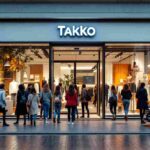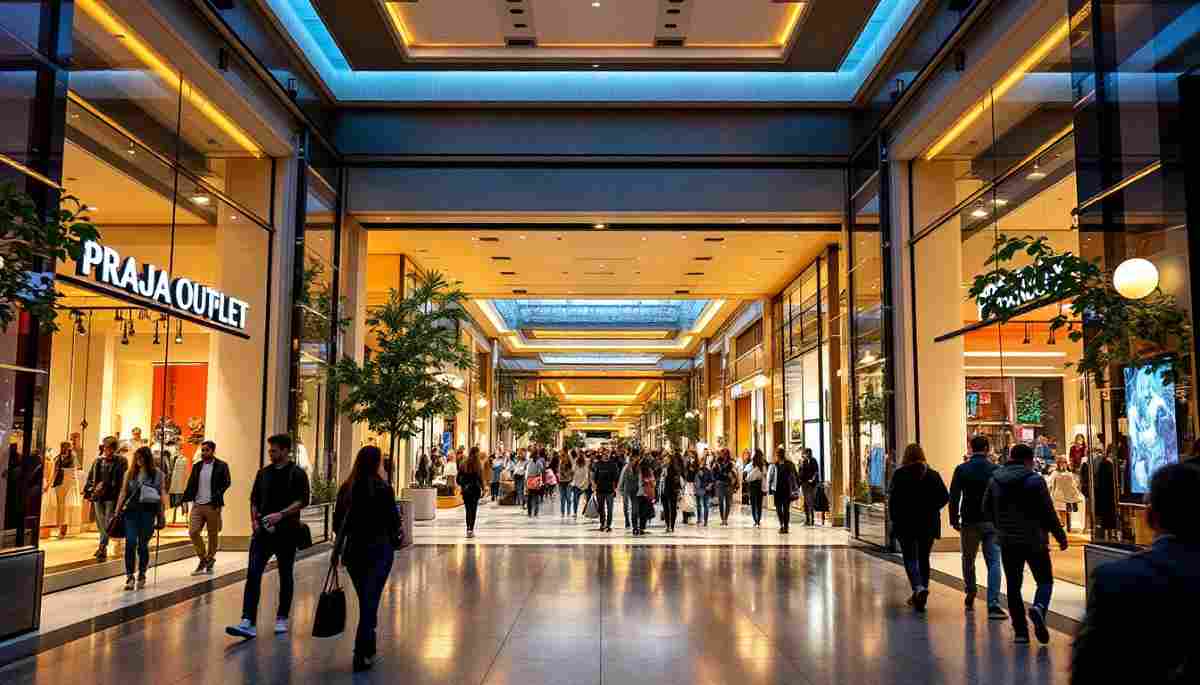Zalando has transformed the landscape of online fashion retail since its inception. Founded in Germany in 2008, it started as a simple shoe retailer and has since evolved into a leading e-commerce platform that offers a wide range of products, including clothing, accessories, and beauty products. This article delves into different aspects of Zalando’s journey, examining its business model, impact on shopping trends, commitment to sustainability, and more.
The Evolution of Zalando: From Startup to E-commerce Giant
Zalando launched with a straightforward concept: sell shoes online. This initial focus allowed the founders to hone their logistics and customer service. By leveraging cutting-edge technology and a customer-centric approach, Zalando quickly gained traction in the market. The founders recognized early on that a seamless user experience was crucial, so they invested heavily in their website’s design and functionality, ensuring that customers could easily navigate through a diverse range of products. This commitment to user experience not only attracted customers but also fostered brand loyalty, as shoppers appreciated the ease of finding their perfect pair of shoes.
In just a few years, Zalando expanded its product offerings beyond footwear, introducing clothing and accessories. The company entered various European markets, adapting its strategies to meet local tastes and preferences. This strategic expansion laid the foundation for Zalando to become the go-to platform for fashion in Europe. As part of this growth, Zalando also embraced the importance of sustainability, launching initiatives aimed at promoting eco-friendly brands and practices. They began to curate a selection of sustainable fashion items, appealing to the growing demographic of environmentally conscious consumers. This not only enhanced their brand image but also positioned Zalando as a leader in the conversation around sustainable fashion in the e-commerce space.
Zalando’s Unique Business Model: What Sets It Apart
One of the defining features of Zalando’s business model is its focus on providing a seamless shopping experience. Unlike many of its competitors, Zalando operates on a platform model rather than holding significant inventory. This allows the company to offer a vast range of products without the associated costs of warehousing. By partnering with a multitude of brands and retailers, Zalando can showcase an extensive catalog that caters to diverse consumer preferences, from high-end fashion to everyday wear. This strategy not only broadens their market appeal but also enables them to quickly adapt to changing fashion trends and consumer demands.
Additionally, Zalando has invested heavily in technology to enhance the user experience. Features like personalized recommendations and advanced search filters help streamline the shopping process. Their commitment to customer service, including free returns and fast delivery options, further differentiates them in the market. Zalando’s sophisticated algorithms analyze user behavior and preferences, allowing them to curate a shopping experience that feels tailored to each individual. Moreover, their mobile app is designed to provide a user-friendly interface, making it easy for customers to shop on-the-go, track orders, and receive notifications about sales or new arrivals. This level of convenience is crucial in today’s fast-paced digital landscape, where consumers expect instant gratification and personalized interactions.
Fashion Forward: Zalando’s Impact on Online Shopping Trends
Zalando has played a pivotal role in shaping online shopping trends within the fashion industry. As one of the first to recognize the importance of user experience, they introduced features like virtual try-ons and mobile apps that made shopping more accessible and enjoyable. This innovative approach not only enhanced customer satisfaction but also set a new standard for competitors in the e-commerce space. The seamless integration of technology into the shopping experience has allowed Zalando to cater to a diverse audience, ensuring that fashion enthusiasts of all backgrounds can find styles that resonate with their personal tastes.
The platform has also made significant strides in social shopping, integrating user-generated content, such as reviews and photos from customers. This trend towards community-driven platforms has changed how consumers engage with fashion brands and retailers. By fostering a sense of community, Zalando encourages customers to share their unique styles and experiences, creating a dynamic marketplace where shoppers can inspire one another. Additionally, the incorporation of social media elements, such as shoppable posts and influencer collaborations, has further blurred the lines between social networking and e-commerce, making it easier for consumers to discover and purchase trending items directly through their feeds.
Moreover, Zalando has embraced sustainability, recognizing the growing consumer demand for eco-friendly practices in fashion. They have launched initiatives aimed at promoting sustainable brands and offering transparent information about the environmental impact of products. By highlighting eco-conscious choices, Zalando not only attracts a more environmentally aware customer base but also encourages other retailers to adopt similar practices. This commitment to sustainability is increasingly becoming a crucial factor in consumer decision-making, influencing how brands position themselves in the competitive online marketplace.
In addition to these advancements, Zalando has also invested in personalized shopping experiences through data analytics and artificial intelligence. By leveraging customer data, they can provide tailored recommendations that align with individual preferences and shopping habits. This level of personalization not only enhances the shopping experience but also increases customer loyalty, as shoppers are more likely to return to a platform that understands their unique style. As Zalando continues to innovate and adapt to the ever-changing landscape of online shopping, its influence on the fashion industry remains profound, setting trends that resonate far beyond its own platform.
Sustainability Initiatives: Zalando’s Commitment to Eco-Friendly Practices
In recent years, Zalando has recognized the importance of sustainability in the fashion industry. Committed to promoting eco-friendly practices, Zalando has implemented several initiatives to reduce its environmental footprint.
- Green Logistics: They’ve adopted more sustainable shipping methods to minimize carbon emissions.
- Responsible Sourcing: Zalando collaborates with brands that prioritize ethical production and sustainable materials.
- Recycling Programs: The company has launched programs to encourage customers to recycle clothing through their platform.
By adopting a comprehensive approach to sustainability, Zalando not only appeals to environmentally conscious consumers but also sets an industry standard.
Navigating Zalando’s User Experience: Tips for Shoppers
For new users, navigating Zalando can be an exciting yet overwhelming experience. With a vast array of products available, it’s essential to utilize certain features to enhance the shopping journey.
- Use Filters: Take advantage of the filtering options to sort by size, color, price, and brand.
- Check Reviews: Make informed decisions by reading customer reviews and ratings.
- Sign Up for Newsletters: Get exclusive discounts and be the first to know about sales and promotions.
By following these tips, shoppers can enjoy a more tailored and satisfying experience on the platform.
Zalando’s Global Expansion: Strategies for Entering New Markets
Zalando has effectively pursued global expansion, tailoring its strategies to fit local markets. Initially focusing on Europe, the company has continuously assessed new opportunities for growth, entering countries like Italy, Spain, and the Netherlands.
Key strategies include localizing content, partnering with local influencers, and offering region-specific products. This allows Zalando to resonate with local consumers and compete effectively against established domestic players.
The Role of Technology in Zalando’s Success
Technology is at the heart of Zalando’s operations. From logistics management to customer service, the integration of advanced technologies plays a vital role in maintaining efficiency.
For instance, algorithms are utilized to personalize shopping experiences, ensuring that customers find products that suit their tastes. Furthermore, investments in artificial intelligence and machine learning allow Zalando to predict trends and optimize stock levels, enhancing overall profitability.
Collaborations and Partnerships: Zalando’s Approach to Brand Alliances
Zalando’s success can be attributed to its strategic collaborations with various brands. By offering exclusive collections and limited editions, Zalando generates excitement among its customer base.
The platform has forged partnerships with both established luxury brands and emerging designers, providing a diverse range of options for every shopper. This inclusive approach not only enhances product offerings but also strengthens brand loyalty.
Customer Loyalty Programs: How Zalando Keeps Shoppers Coming Back
Customer loyalty is crucial in a competitive market, and Zalando has implemented effective programs to encourage repeat business. Their loyalty program rewards customers for repeated purchases, providing points that can be redeemed for discounts.
Moreover, the platform frequently engages users with personalized promotions and curated selections based on previous shopping behaviors. This targeted approach ensures that shoppers feel valued and appreciated, enhancing their shopping experience.
Future Trends: What’s Next for Zalando in the E-commerce Landscape
As the e-commerce landscape continues to evolve, Zalando is well-positioned to adapt and innovate. Looking ahead, we can expect the company to further embrace technologies such as augmented reality and virtual reality, enhancing the online shopping experience.
Additionally, Zalando is likely to continue expanding its sustainability initiatives, setting new standards for the industry. As consumer demand for eco-conscious practices grows, Zalando’s proactive approach will likely strengthen its market position.
In summary, Zalando’s evolution from a startup to an e-commerce giant is a testament to its innovative business strategies, commitment to customer satisfaction, and focus on sustainability. The future looks promising as it continues to shape the online fashion retail landscape.










